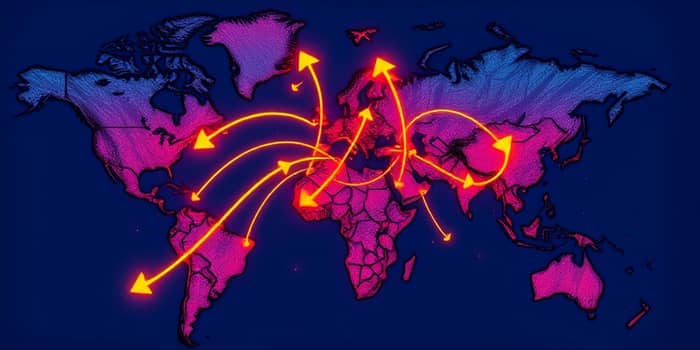
Over the past two years, investors worldwide have demonstrated a clear preference for stability. With economic turbulence and geopolitical uncertainty on the rise, capital is increasingly gravitating toward regions that offer more stable, transparent markets and predictable returns. This article explores the forces driving this shift, examines the sectors attracting the bulk of funds, and considers what the future may hold for global finance.
The magnitude of the trend becomes clear when we look at the numbers. In the first five months of 2025 alone, investment firms raised $58 billion for real estate globally, directing roughly half of that total to core markets known for their regulatory clarity. Meanwhile, U.S. capital inflows reached $102.1 billion in March 2024, underlining America’s enduring appeal as a safe destination.
These figures highlight both the scale of investment and the sectors—real estate, infrastructure, clean energy—that are absorbing the largest shares of new capital.
For decades, Western Europe and the United States dominated global finance, serving as the primary originators and recipients of cross-border capital. That hegemony is now giving way to a polycentric and multipolar landscape. Emerging hubs in Asia, notably India, and in the Middle East, such as the Abu Dhabi Global Market and Dubai International Financial Centre, are carving out significant roles.
These centers have cultivated business-friendly rules, streamlined licensing, and strategic trade partnerships, attracting institutional investors and sovereign wealth funds seeking unprecedented levels of long-term capital. As a result, global finance is evolving into a network of interlinked nodes rather than a unilateral flow between a few dominant economies.
Three primary factors are transforming the flow of capital from “push” dynamics in advanced economies to “pull” dynamics in stable regions:
By focusing on these pull factors, governments have effectively lured sophisticated funds that formerly chased low-cost borrowing in mature markets.
Investment flows are not uniform; specific sectors stand out for their scale and strategic importance.
Real Estate: Transparent markets in North America and Western Europe have seen transaction volumes rebound. Investors prioritize prime office and industrial assets, where yield compression reflects intense competition and strong tenant demand.
Infrastructure: Ports, logistics corridors, and digital networks are drawing both public and private capital. In economies with robust legal and property rights frameworks, commitments can span decades, delivering stable income streams aligned with long-term growth.
Private Markets: Private equity and infrastructure funds are shifting focus from financial engineering to operational value creation. These managers prefer jurisdictions where predictable regulation mitigates the risk of sudden policy reversals.
The era of ultra-low interest rates is ending, making stable environments with moderate yields more attractive. Investors now demand protection against policy volatility and currency swings.
These macro policy shifts reinforce the appeal of markets where central banks and governments demonstrate consistent, transparent decision-making.
While developed economies and emerging hubs gain favor, less stable markets face serious challenges. Sudden outflows can trigger boom-bust cycles and currency volatility, undermining growth and investor confidence.
Policymakers in these regions must balance openness with protective measures to prevent destabilizing surges and reversals of capital.
Sovereign wealth funds and pension schemes from emerging economies are becoming influential originators of cross-border capital. Yet, when deploying funds abroad, they consistently prioritize regulatory certainty and long-term project viability over short-term yield chasing. This trend underscores a fundamental change in how institutional investors assess risk and opportunity on the global stage.
The realignment of global capital flows toward stability is likely to persist, with advanced markets and newly established financial centers retaining their competitive edge. Over time, as emerging hubs mature and fortify their governance frameworks, the map of capital origins and destinations may rebalance yet again.
For investors, understanding these dynamics is critical to navigating a complex landscape where policy transparency, legal strength, and sustainable growth prospects define the safest harbors for capital.
References













